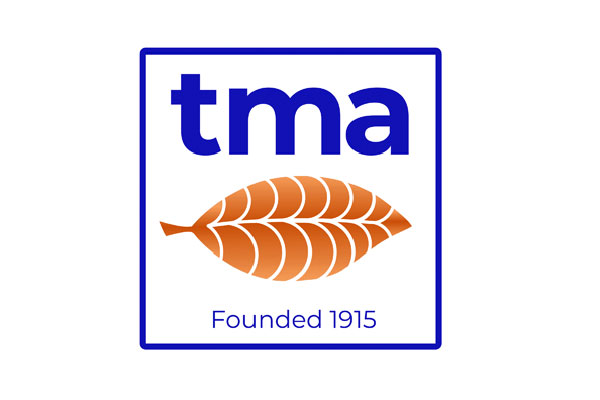Participants hear from CTP Office of Science Director Matt Holman, among others.
The second day of TMA’s “From Chance to Change” online seminar included a presentation by U.S. Food and Drug Administration Center for Tobacco Products (CTP) Office of Science Director Matt Holman along with panel discussions titled “Early and Often: Navigating Your Path to Market” and “Connecting U.S. and Global Trends.”

Holman discussed the FDA’s recent actions on premarket tobacco product applications (PMTAs), key considerations in the agency’s “appropriate for the protection of public health” determinations and the final rules for PMTAs and substantial equivalence reports.
Holman touched on the agency’s marketing granted orders (MGOs) to four Verve oral tobacco products—all of which were discontinued by Altria Group in 2019—and R.J. Reynolds Vapor Co.’s Vuse Solo vapor cigarette. In both cases, he said, the applicant had demonstrated that the products have lower toxicity levels and abuse liability risks than cigarettes along with minimal youth appeal.
In the PMTA final rule, Holman highlighted the ability for recipients of a marketing denial order (MDO) to rectify the shortcoming in their original application with a supplemental PMTA that cross-referenced the original application, thus streamlining the process for both applicant and reviewer.

Holman then participated in a “path to market” panel discussion, moderated by Altria Client Services Director of Regulatory Advocacy Jennifer Smith, that also included Gerry Roerty, vice president, general counsel and secretary of Swedish Match North America; Tara Couch, senior director of dietary supplement and tobacco services at EAS Consulting Group; Elaine Round, vice president of scientific and regulatory affairs at RAI Services Co.; and Tobacco Lab Testing Expert Kimberly Hesse.
One of the takeaways from this session was the importance of starting “with the end in mind.” Getting things right from the beginning will save applicants time and money because even minor product changes involve new, time-consuming applications under the FDA’s pathways.
According to one panelist, the first question in the journey to market should be: Can we make this product, and can we make it consistently? Applicants should think about samples and suppliers and conduct environmental assessments. With the FDA seeking greater consumer insights, applicants should look for professional assistance in obtaining such information. And it pays to involve product testers early in the process. Lab workers may be unfamiliar with the product and require explanations on its operations. And then there are safety considerations. Hesse recalled instances of products that sparked and ignited when connected to laboratory machinery.
Round said one lesson she learned from Reynolds’ successful Vuse Solo marketing application was that “bridging”—the referencing of existing studies—works, provided that the applicant explained it well. She also advised applicants to generate a volume of information that is “exactly enough and not too much.”
Several panelists mentioned the challenge of obtaining consumer insights in PMTAs. They suggested that the FDA should consider allowing more of that information to be gathered as part of postmarket surveillance, which would have the added benefit of generating more realistic data.

The final session of the TMA webinar explored the differences and similarities between the U.S. and the rest of the world in terms of nicotine product regulation. Moderated by Jeannie Cameron, CEO and managing director of JCIC International, this panel included Abrie Du Plessis, regulatory affairs counsel at the South African Trade Law Centre; Patricia Kovacevic, general counsel and head of external affairs and regulation strategy at Cryomass Technologies; Rob Koreneef, public affairs advisor; and Flora Okereke, head of global regulatory insights and foresights at BAT.
The discussion focused on the recently concluded ninth Conference of the Parties to the World Health Organization Framework Convention on Tobacco Control (FCTC), which was developed before the emergence of reduced-risk products and which the panelists agreed was “frozen in time.”
Du Plessis described the positions of the various health bodies in relation to reduced-risk products. The Conference of the Parties, he said, is divided on the issue, providing no guidance on new and emerging products. The WHO has slight ideological opposition to novel products whereas the FCTC Secretariat—which has gradually evolved from an administrative body to an implementation agency—appears to have no use for reduced-risk products. The secretariat, said Du Plessis, is focused on getting countries to implement the FCTC’s standard measures.
Okereke examined the diversity in regulatory regimes for novel tobacco products around the world. She distinguished three themes: how harm reduction is treated, the premarket approval process and product categorization. Tobacco harm reduction, she said, is acknowledged by regulators in the U.S., the U.K., Canada, Germany, Ireland and New Zealand. Everywhere else it remains an elusive concept. The U.S. is the only country with a robust premarket requirement, and when it comes to categorization the world is divided. Some countries put vapor products under existing tobacco regulations (EU); others regulate them as pharmaceuticals (Australia); and yet others ban the products altogether (Brazil, Mexico, Turkey and Japan).
Kovacevic highlighted the discrepancy between the United States, where the CTP, which is funded by industry user fees, is required to interact with the tobacco industry and the rest of the world, where regulators keep the industry at arms’ length. She also pointed out the irony that even though the U.S. is not a party to the FCTC, it generates much of the science that the treaty’s signatories rely on—including industry science generated through the various marketing application processes.
During the question-and-answer session following the panel discussion, one participant asked why U.S. tobacco companies should care about the international environment. Kovacevic responded by describing the high barriers to entry in the U.S. If access to the U.S. market closes through MDOs, she pointed out, the only remaining market is abroad. And there is also a moral motive: Most of the smokers who stand to benefit from reduced-risk products live outside of the U.S., often in low-income and middle-income countries. If companies are committed to harm reduction, they have a civic duty to serve them, said Kovacevic.
Read our summary of the first conference day here.

